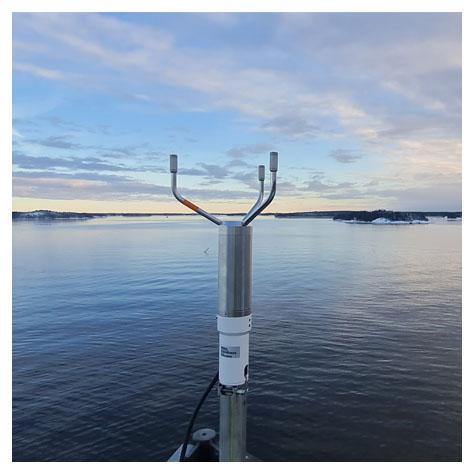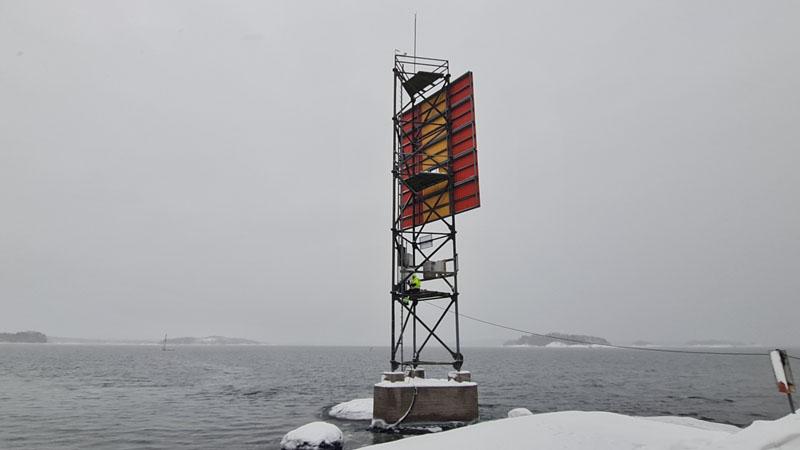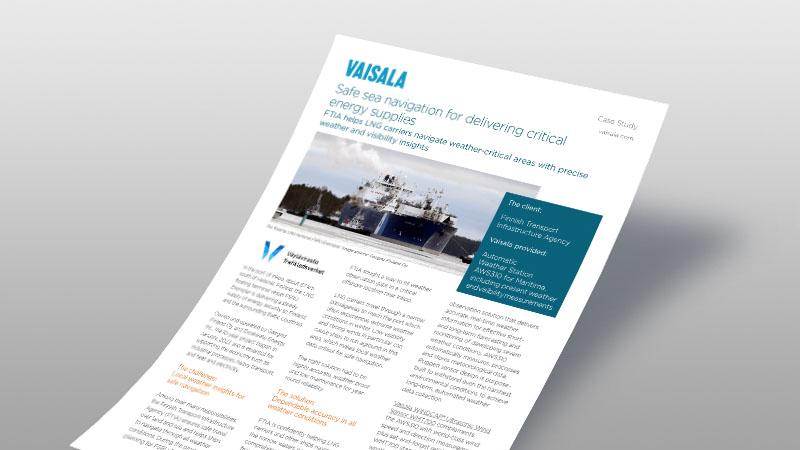Safe sea navigation for delivering critical energy supplies
FTIA helps LNG carriers navigate weather-critical areas with precise weather and visibility insights.
The client: Finnish Transport Infrastructure Agency (FTIA)
Vaisala provided: Automatic Weather Station AWS310 for Maritime, including present weather and visibility measurements
In the port of Inkoo, about 57 km south of Helsinki, Finland, the LNG floating terminal vessel FSRU Exemplar is delivering a steady supply of energy security to Finland and the surrounding Baltic countries. Owned and operated by Gasgrid Finland Oy and Excelerate Energy, Inc., the 10-year project began in January, 2023 and is essential for supporting the economy such as industrial processes, heavy transport, and heat and electricity.
The challenge: Local weather insights for safe navigation
Among their many responsibilities, the Finnish Transport Infrastructure Agency (FTIA) ensures safe travel over land and sea and helps ships to navigate through all weather conditions. During the project planning for FSRU Exemplar, FTIA sought a way to fill weather observation gaps in a critical offshore location near Inkoo.
LNG carriers travel through a narrow passageway to reach the port which often experiences extreme weather conditions in winter. Low visibility and strong winds in particular can cause ships to run aground in this area, which makes local weather data critical for safe navigation. The right solution had to be highly accurate, weather proof and low maintenance for year- round reliability.
The solution: Dependable accuracy in all weather conditions
FTIA is confidently helping LNG carriers and other ships navigate the narrow waters near Inkoo with comprehensive weather insights from Vaisala technology. Vaisala’s AWS310 Automatic Weather Station is a complete communication and weather observation solution that delivers accurate, real-time weather information for effective short- and long-term forecasting and monitoring of developing severe weather conditions. AWS310 automatically measures, processes and stores meteorological data. Rugged sensor design is purpose- built to withstand even the harshest environmental conditions to achieve long-term, automated weather data collection.

Vaisala WINDCAP® Ultrasonic Wind Sensor WMT700 complements the AWS310 with world-class wind speed and direction measurements plus set-and-forget reliability. WMT700 stands up to any weather conditions, especially with the optional heaters in the transducer, arm and body FTIA selected to prevent build-up of freezing precipitation.
Vaisala Present Weather Detector PWD22 is the industry standard, built to perform under the most demanding conditions. PWD22 delivers a mix of visibility measurement range, characterization of reduced visibility, precipitation type identification, precipitation accumulation/intensity measurement, and report formats — all in a reliable, cost-effective design.
FTIA can quickly analyze and share the weather data with key stakeholders thanks to Vaisala Observation Network Manager NM10, which connects and visualizes weather station and individual sensor data in one location for monitoring and control. Real-time sensor status makes proactive maintenance easier.
The benefits: Safer, more confident navigation for energy security
The Automatic Weather Station with wind and visibility sensors are installed right where FTIA and ships need them: on a 25-meter high sea mark, located on a remote island beside the narrowest part of the sea route near Inkoo. From here, real-time and precise information on weather and sea conditions are always available for safe navigation and decision-making such as rerouting, anchorage, waiting or even pilot or tugboat assistance during bad weather conditions.
FTIA shares the weather data with those who need it most — captains, pilots, port and vessel traffic management authorities — so LNG carriers can safely navigate to and from FSRU Exemplar and continue delivering critical energy supplies. Precise, real-time weather information will have a significant impact on safety and cost savings by preventing weather-related accidents and delays as well as safeguarding continuous LNG deliveries to Finland.
"With the help of comprehensive weather insights, we can ensure that LNG carriers and other ships can make informed decisions for rerouting, anchorage, waiting, or even pilot and tugboat assistance during bad weather. This commitment to safety not only prevents weather-related accidents and delays but also safeguards continuous LNG deliveries to Finland, making precise and real-time weather information a critical investment for both safety and cost savings."
Simo Kerkelä, Head of Unit, Finnish Transport Infrastructure Agency


